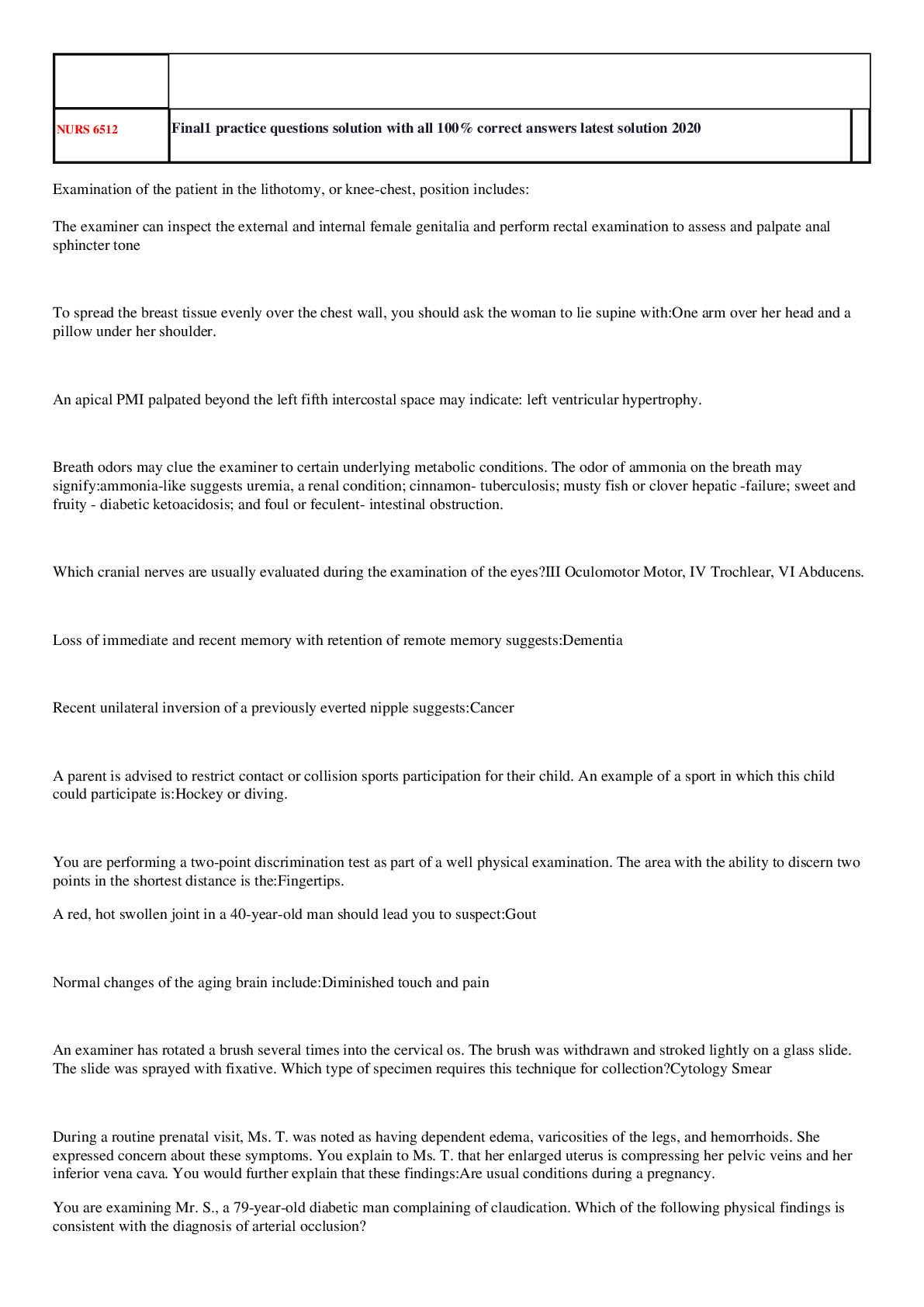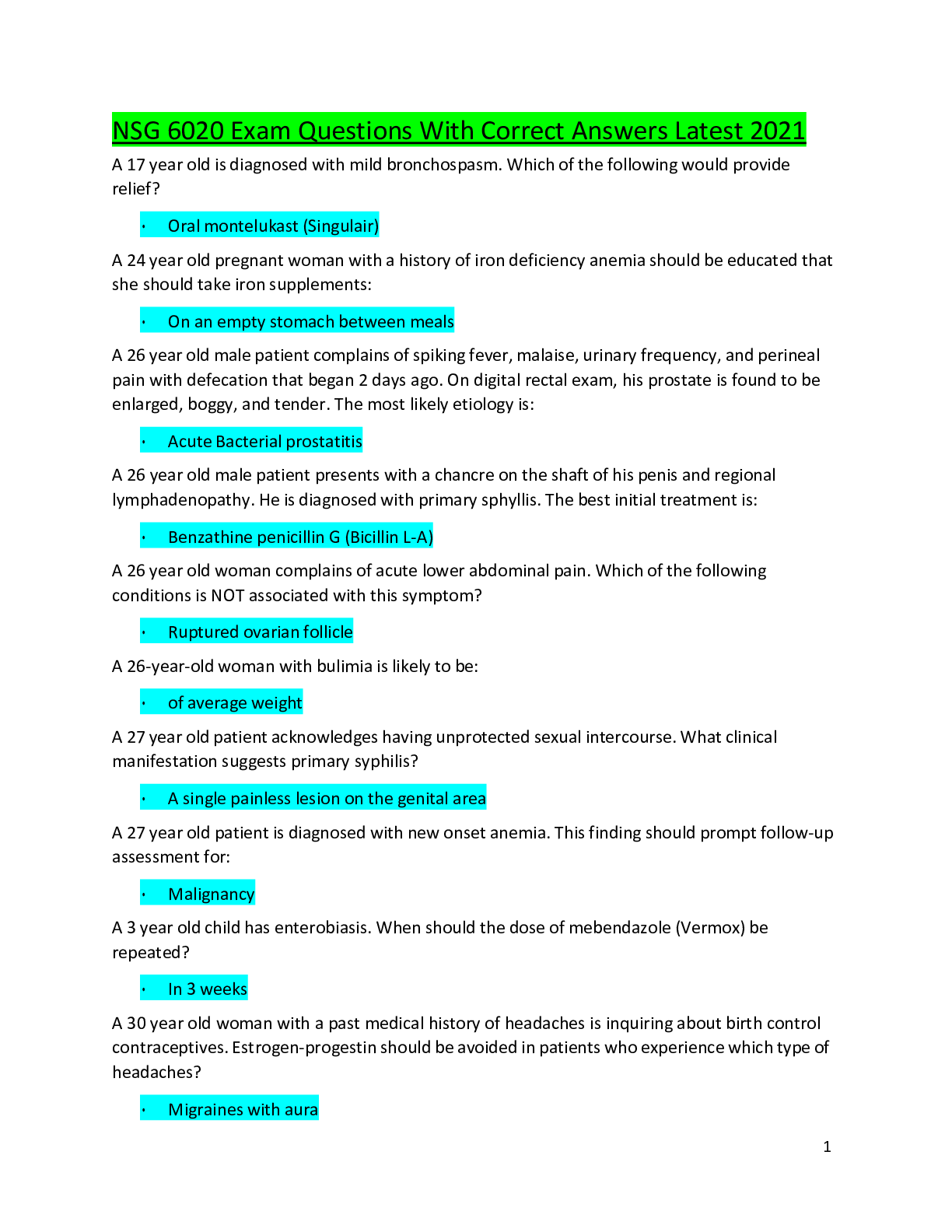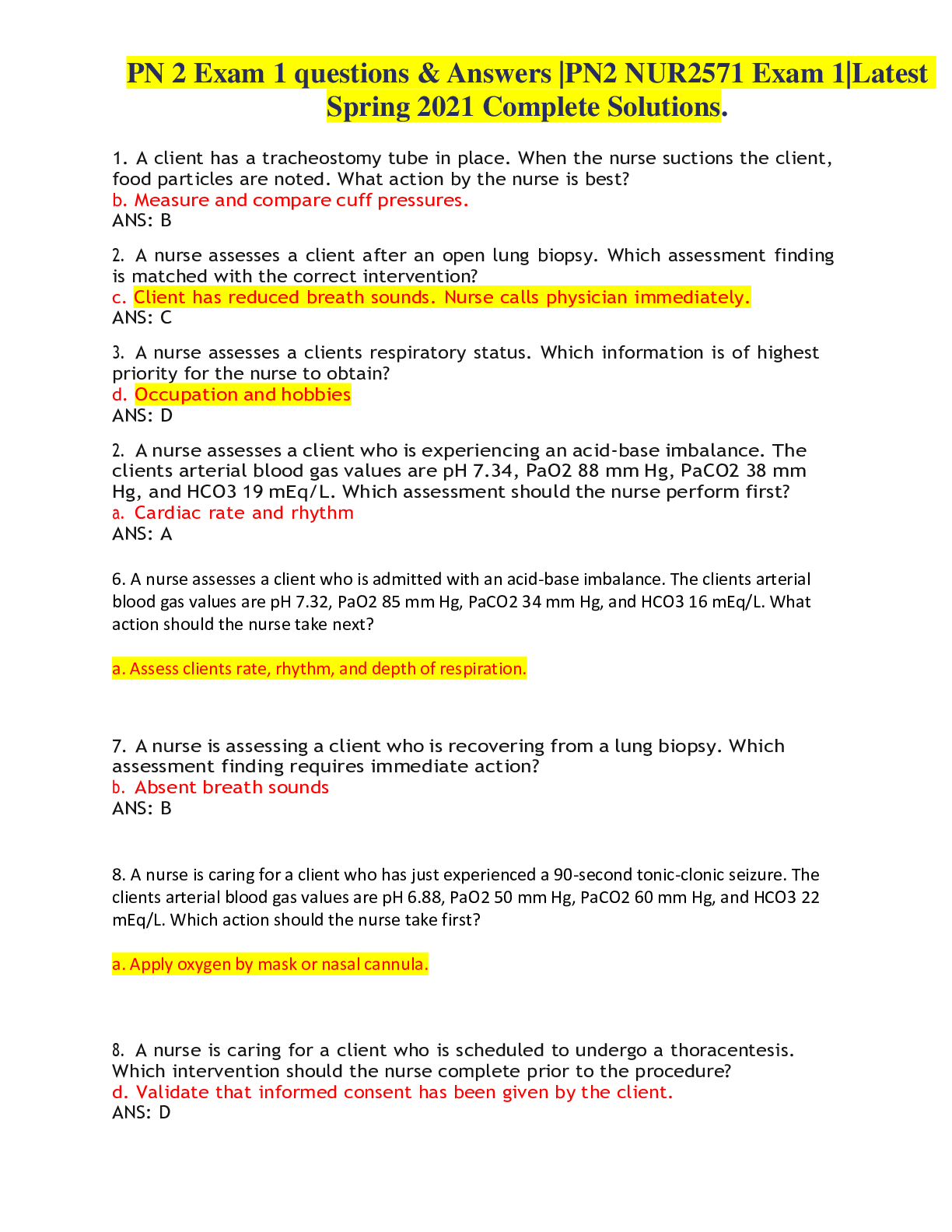*NURSING > EXAM > NURS 629 MVU EXAM PRACTICE 1 QUESTIONS & CORRECT ANSWERS LATEST 2023-2024 NEW UPDATE 100% SCORES A+ (All)
NURS 629 MVU EXAM PRACTICE 1 QUESTIONS & CORRECT ANSWERS LATEST 2023-2024 NEW UPDATE 100% SCORES A+ GRADE
Document Content and Description Below
NURS 629 MVU EXAM PRACTICE 1 QUESTIONS & CORRECT ANSWERS LATEST 2023-2024 NEW UPDATE 100% SCORES A+ GRADE 1. The primary care pediatric nurse practitioner performs a vision screen on a 4- ... ID: 13348411154 month-old infant and notes the presence of convergence and accommodation with mild esotropia of the left eye. What will the nurse practitioner do? A. Patch the right eye to improve coordination of the left eye. B. Reassure the parents that the infant will outgrow this. C. Recheck the infant’s eyes in 2 to 4 weeks. D. Refer the infant to a pediatric ophthalmologist. Correct 2. During a well child exam on a 4-year-old child, the primary care pediatric nurse ID: 13348411168 practitioner notes that the clinic nurse recorded “20/50” for the child’s vision and noted that the child had difficulty cooperating with the exam. What will the nurse practitioner recommend? A. Follow up with a visual acuity screen in 6 months. B. Refer to a pediatric ophthalmologist. C. Re-test the child in 1 year. D. Test the child’s vision in 1 month. 3. During a well child assessment of an African-American infant, the primary care ID: 13348411148 pediatric nurse practitioner notes a dark red-brown light reflex in the left eye and a slightly brighter, red-orange light reflex in the right eye. The nurse practitioner will A. dilate the pupils and reassess the red reflex. B. order auto-refractor screening of the eyes. C. recheck the red reflex in 1 month. D. refer the infant to an ophthalmologist. Correct 4. The primary care pediatric nurse practitioner performs a Hirschberg test to evaluate A. color vision. B. ocular alignment. Correct C. peripheral vision. D. visual acuity. 5. The primary care pediatric nurse practitioner applies fluorescein stain to a child’s eye. When examining the eye with a cobalt blue filter light, the entire cornea appears cloudy. What does this indicate? A. The cornea has not been damaged. ID: 13348411150 ID: 13348411146 B. There is too little stain on the cornea. C. There is damage to the cornea. D. There is too much stain on the cornea. Correct 6. A toddler exhibits exotropia of the right eye during a cover-uncover screen. The ID: 13348411156 primary care pediatric nurse practitioner will refer to a pediatric ophthalmologist to initiate which treatment? A. Botulinum toxin injection B. Corrective lenses C. Occluding the affected eye for 6 hours per day D. Patching of the unaffected eye for 2 hours each day 7. The primary care pediatric nurse practitioner performs a well child examination on ID: 13348411140 a 9-month-old infant who has a history of prematurity at 28 weeks’ gestation. The infant was treated for retinopathy of prematurity (ROP) and all symptoms have resolved. When will the infant need an ophthalmologic exam? A. At 12 months of age Correct B. At 24 months of age C. At 48 months of age D. At 60 months of age 8. During a well-baby assessment on a 1-week-old infant who had a normal exam ID: 13348411144 when discharged from the newborn nursery 2 days prior, the primary care pediatric nurse practitioner notes moderate eyelid swelling, bulbar conjunctival injections, and moderate amounts of thick, purulent discharge. What is the likely diagnosis? A. Chemical-induced conjunctivitis B. Chlamydia trachomatis conjunctivitis Correct C. Herpes simplex virus (HSV) conjunctivitis D. Neisseria gonorrhea conjunctivitis 9. The primary care pediatric nurse practitioner performs a well baby assessment of ID: 13348411152 a 5-day-old infant and notes mild conjunctivitis, corneal opacity, and serosanguinous discharge in the right eye. Which course of action is correct? A. Administer intramuscular ceftriaxone 50 mg/kg. B. Admit the infant to the hospital immediately. Correct C. Give oral erythromycin 30 to 50 mg/kg/day for 2 weeks. D. Teach the parent how to perform tear duct massage. 10. A preschool-age child who attends day care has a 2-day history of matted eyelids K. L. ID: in the morning and burning and itching of the eyes. The primary care pediatric nurse practitioner notes yellow-green purulent discharge from both eyes, conjunctival erythema, and mild URI symptoms. Which action is correct? I. A. Culture the conjunctival discharge. B. Observe the child for several days. C. Order an oral antibiotic medication. D. Prescribe topical antibiotic drops. Correct 11. A 14-year-old child has a 2-week history of severe itching and tearing of both J. ID: eyes. The primary care pediatric nurse practitioner notes redness and swelling of the eyelids along with stringy, mucoid discharge. What will the nurse practitioner prescribe? G. A. Saline solution or artificial tears B. Topical mast cell stabilizer C. Topical NSAID drops D. Topical vasoconstrictor drops [Show More]
Last updated: 7 months ago
Preview 1 out of 25 pages

Reviews( 0 )
Document information
Connected school, study & course
About the document
Uploaded On
Oct 16, 2023
Number of pages
25
Written in
Additional information
This document has been written for:
Uploaded
Oct 16, 2023
Downloads
0
Views
56

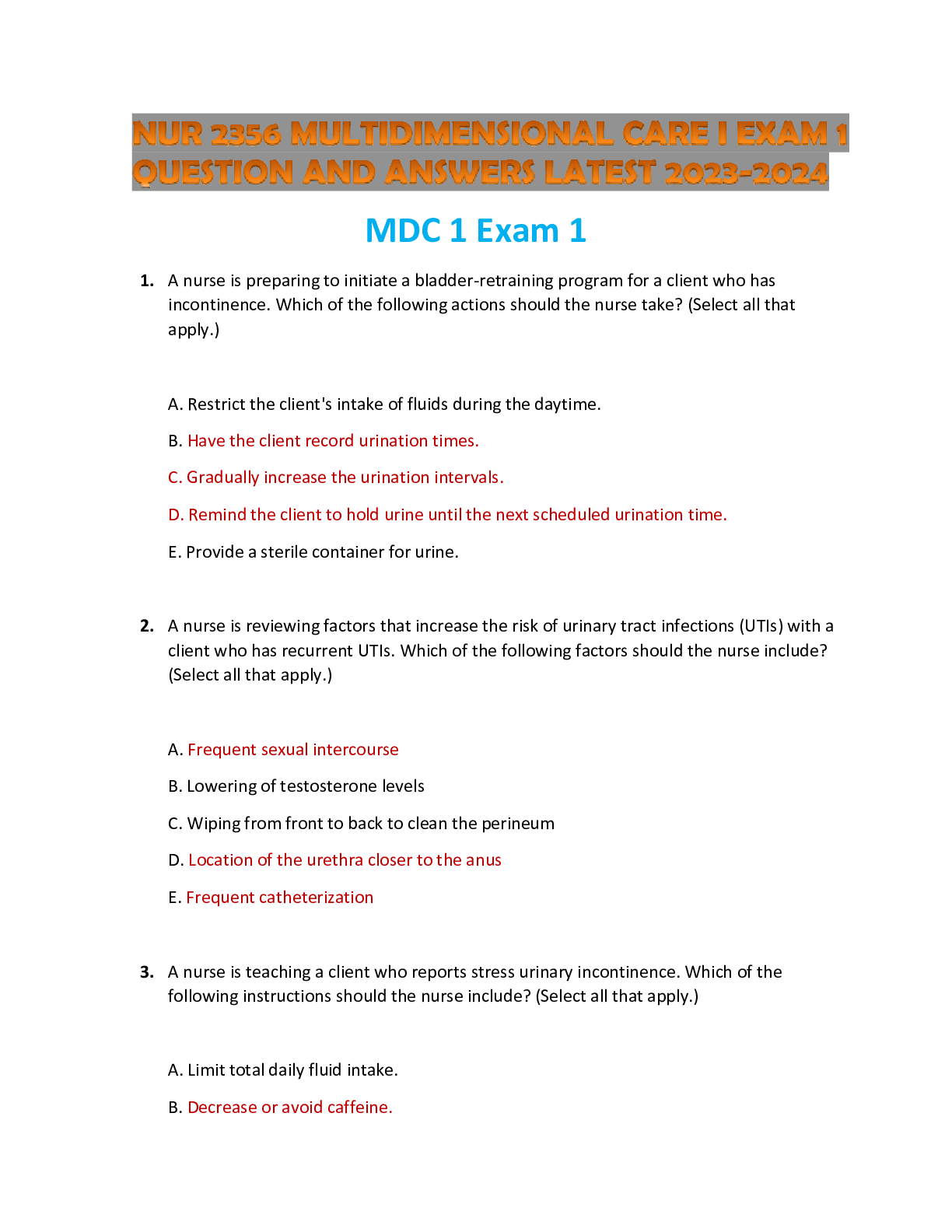
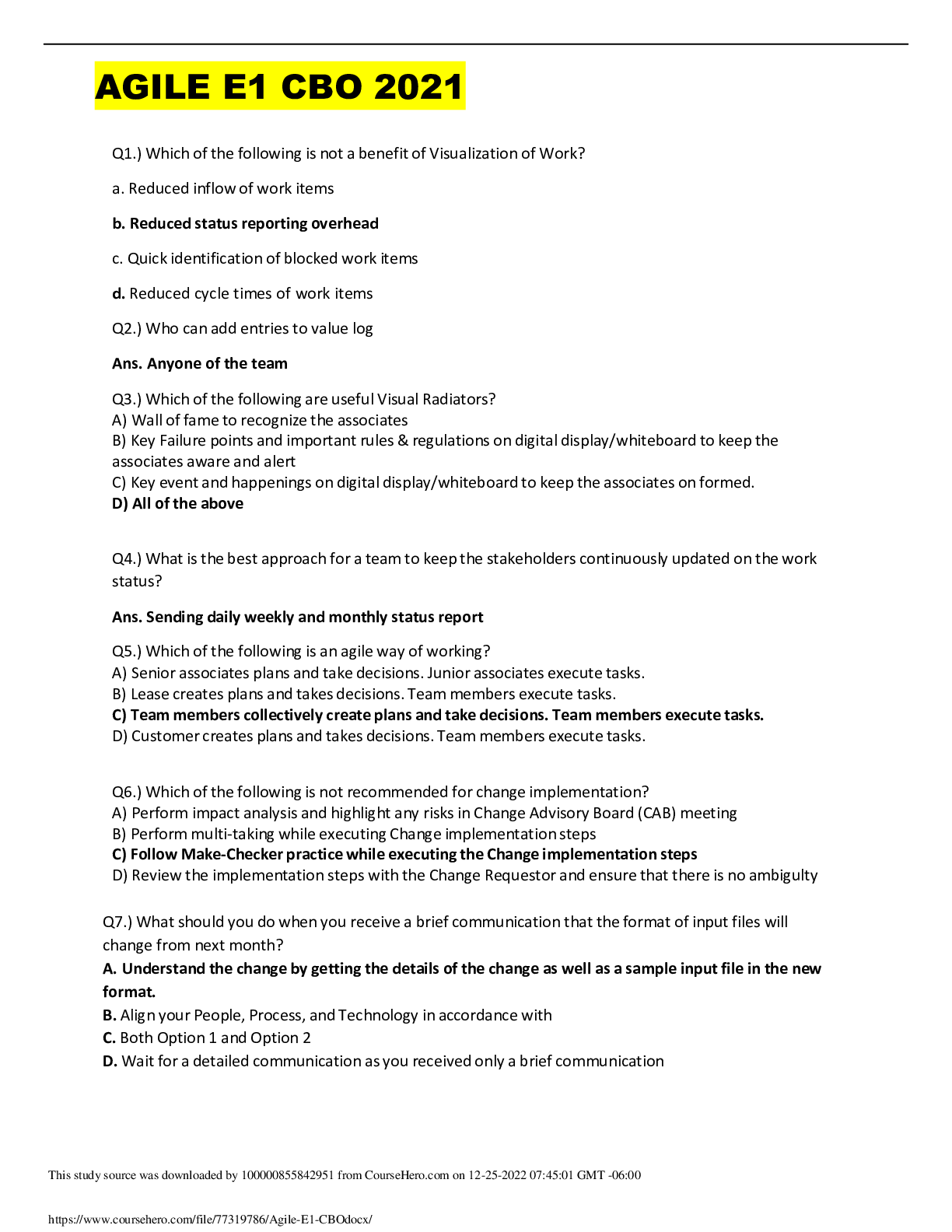
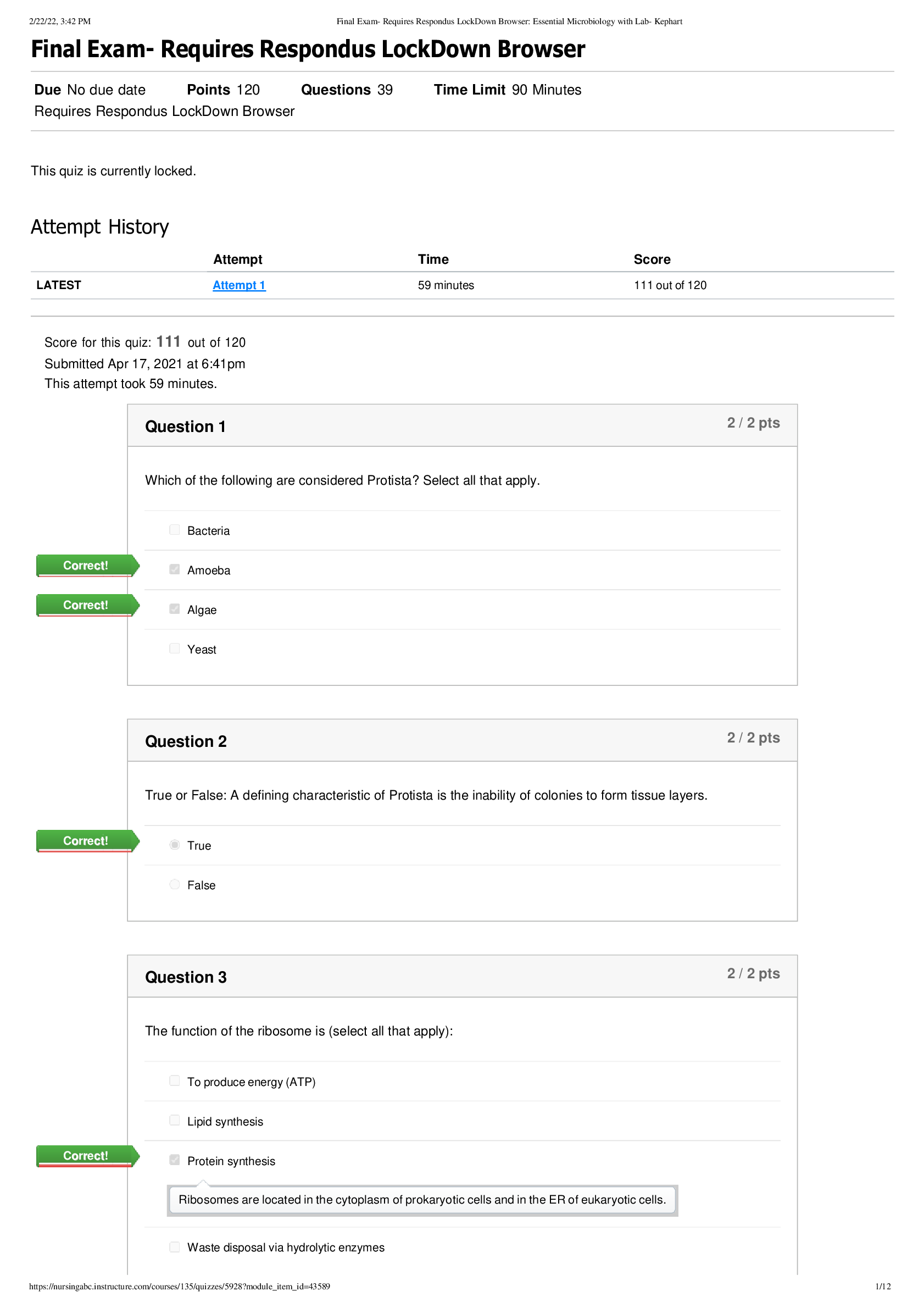


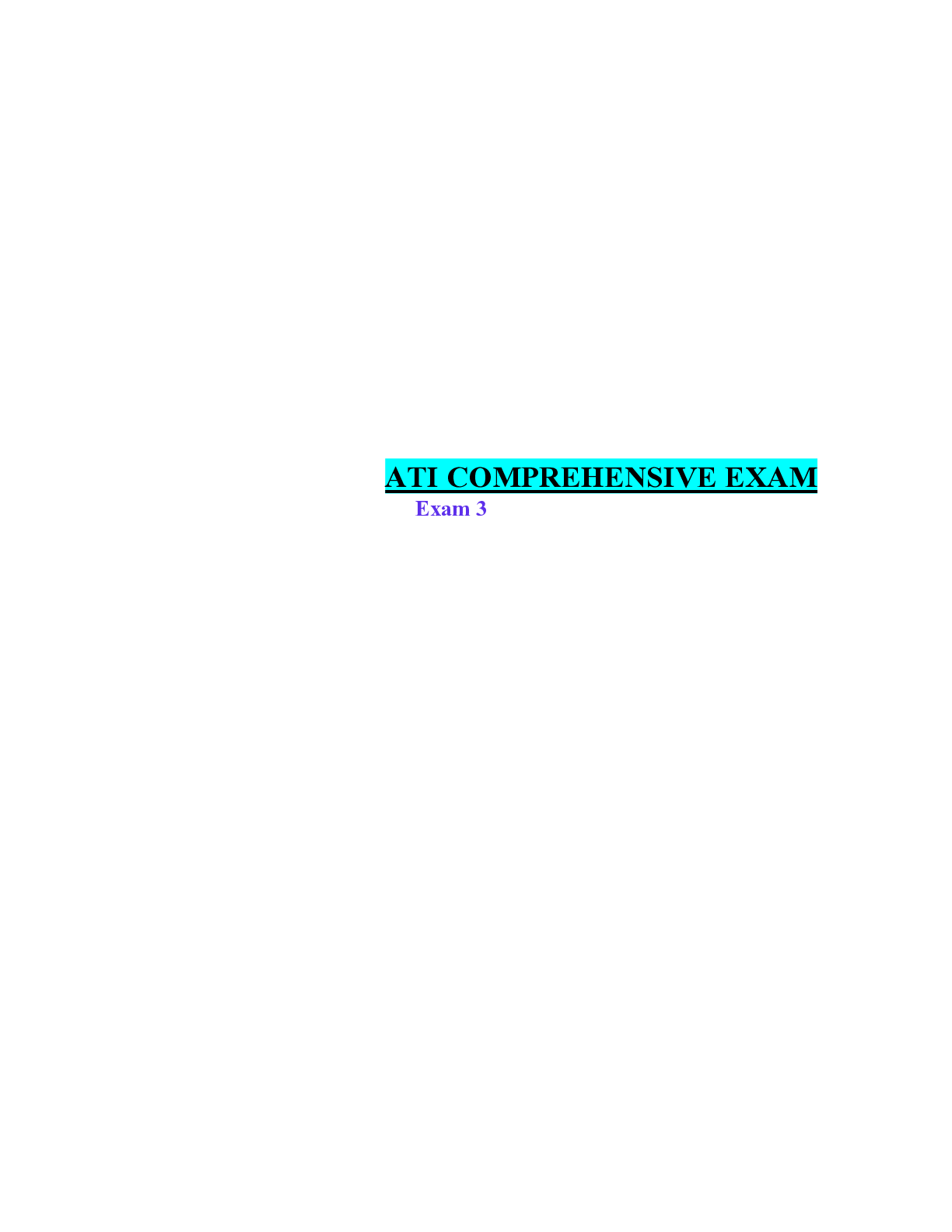
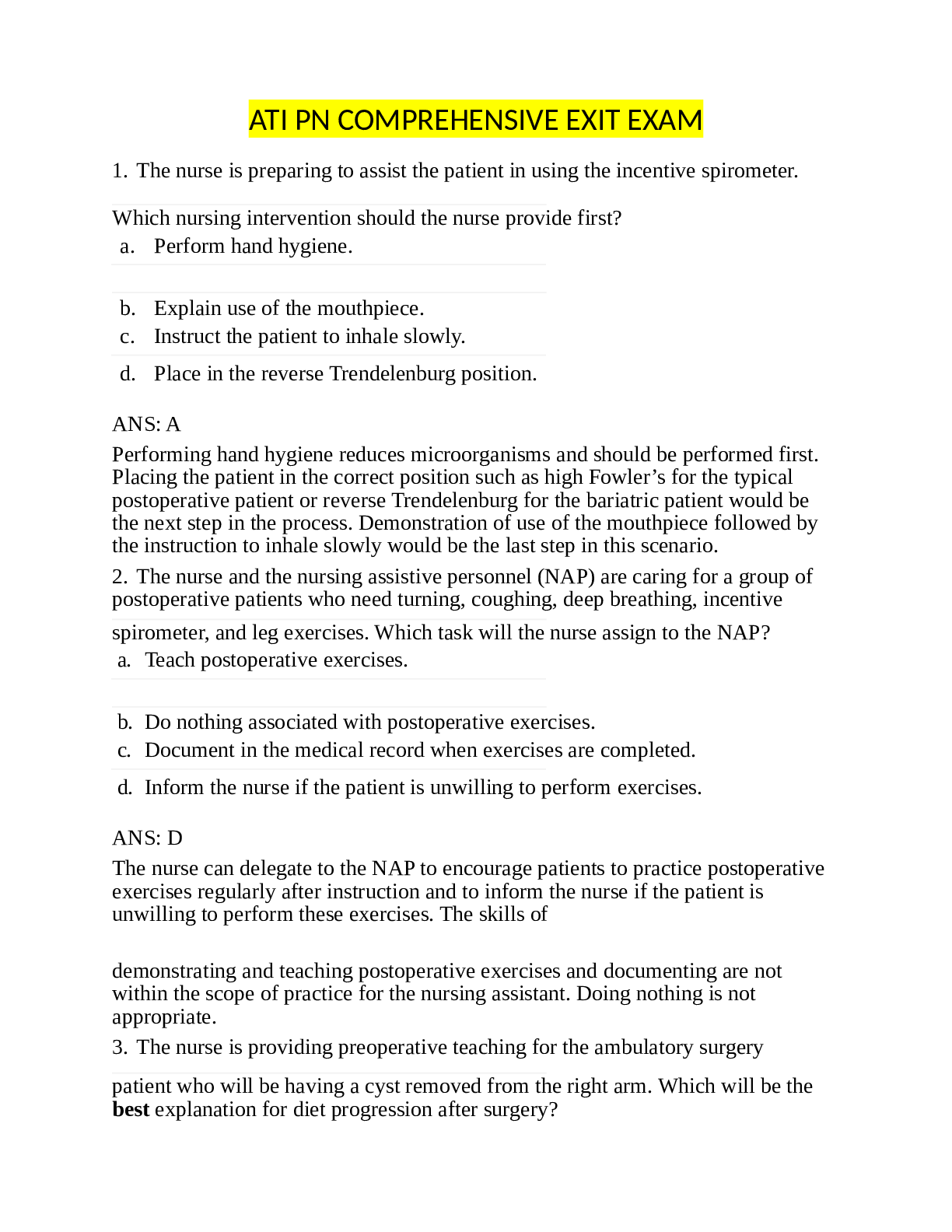
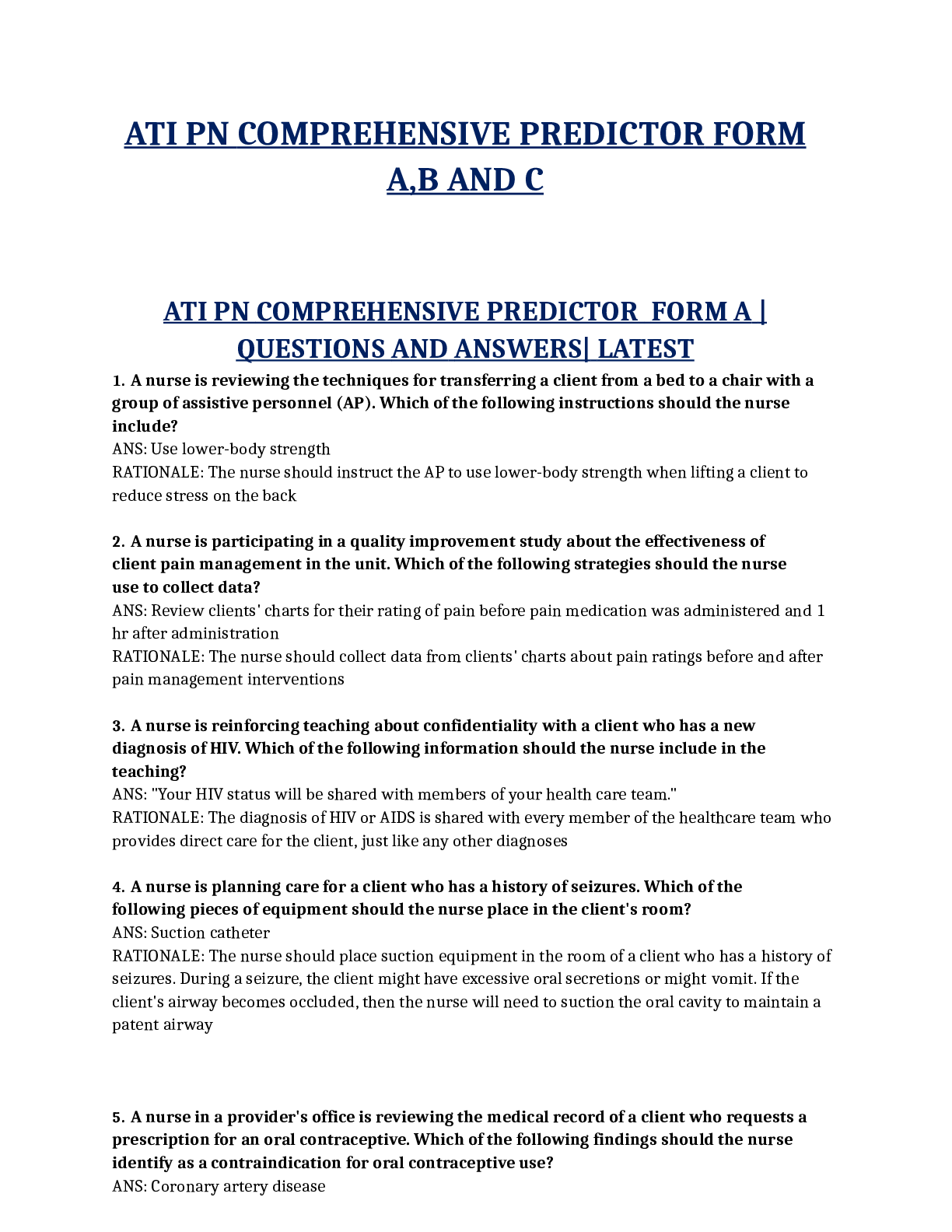

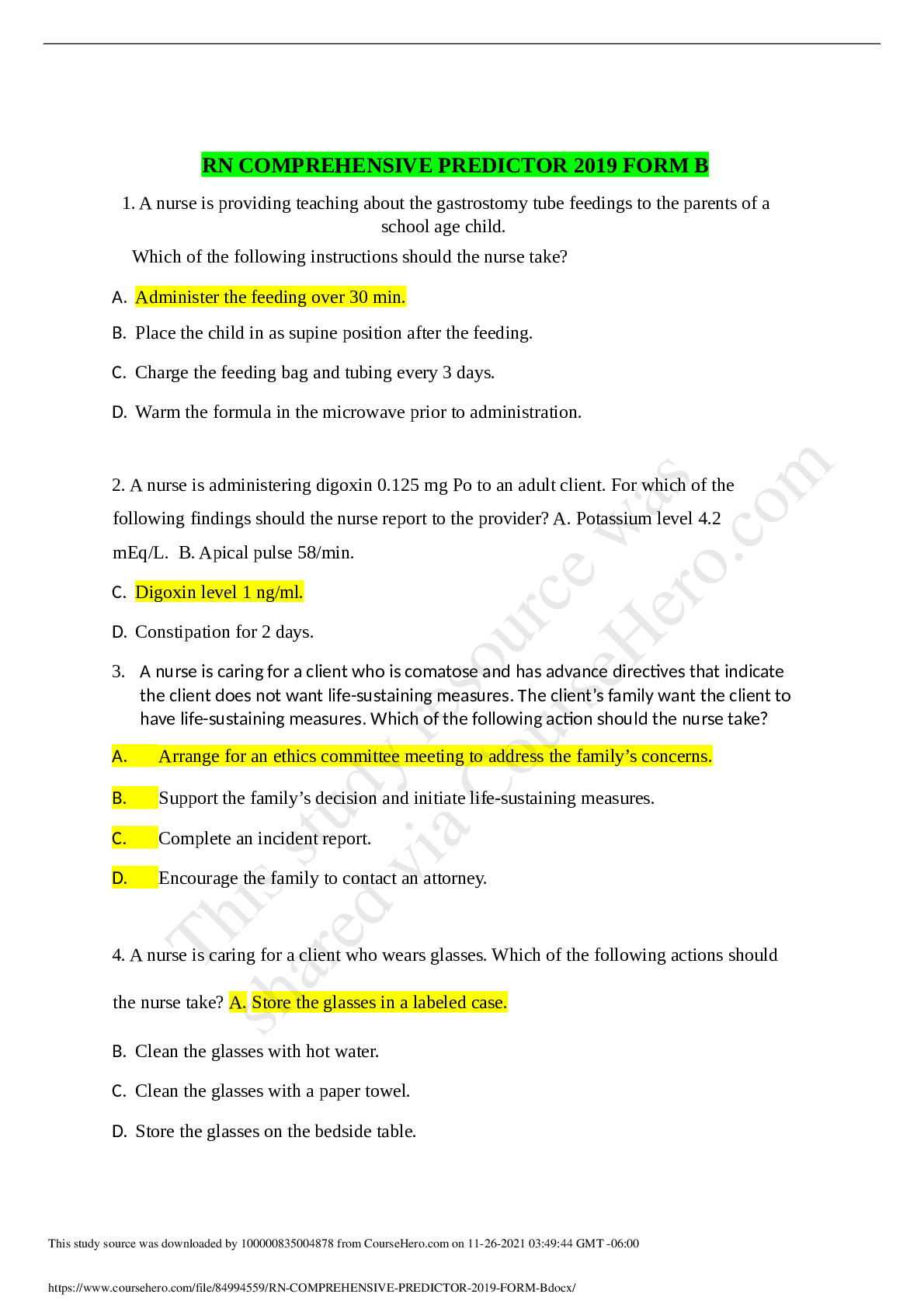

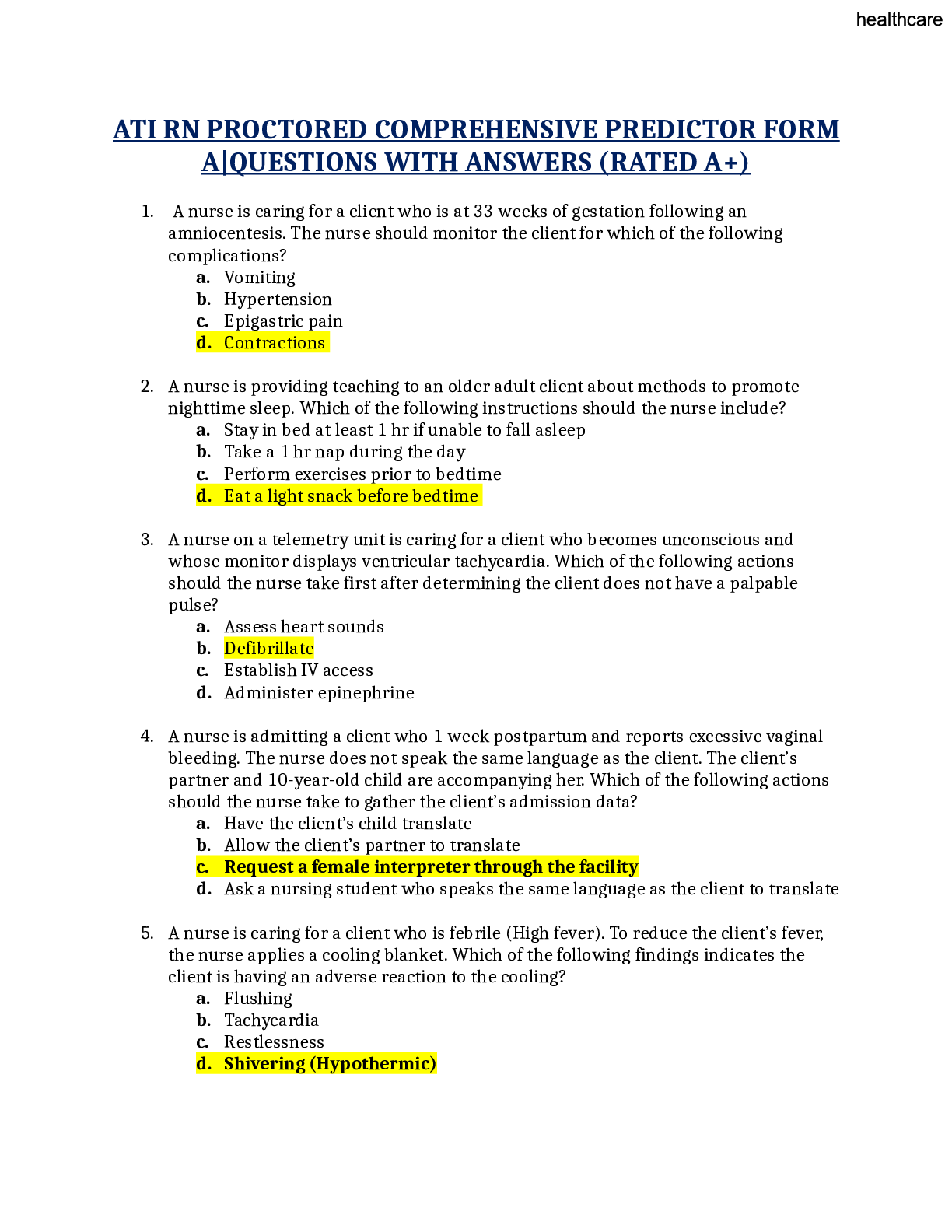
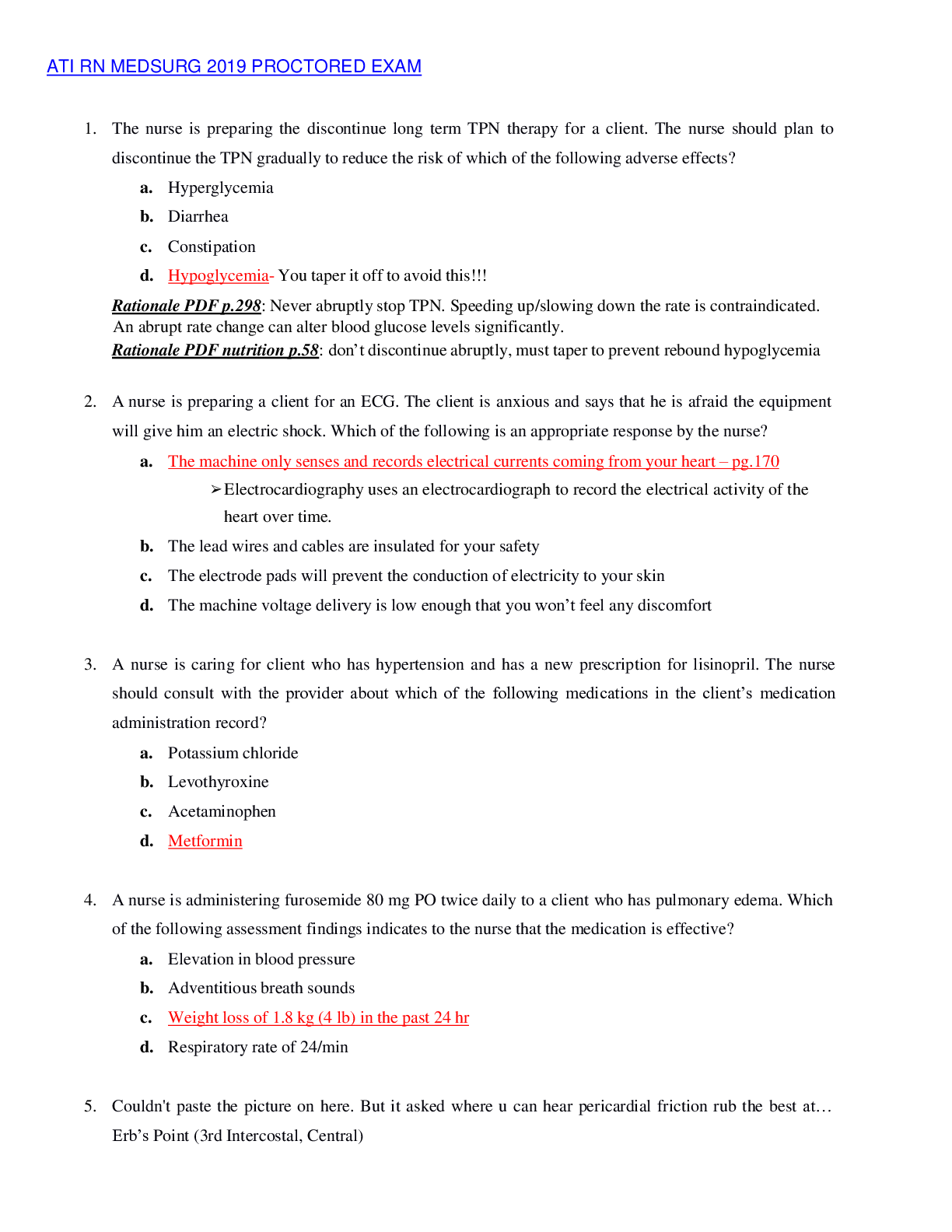
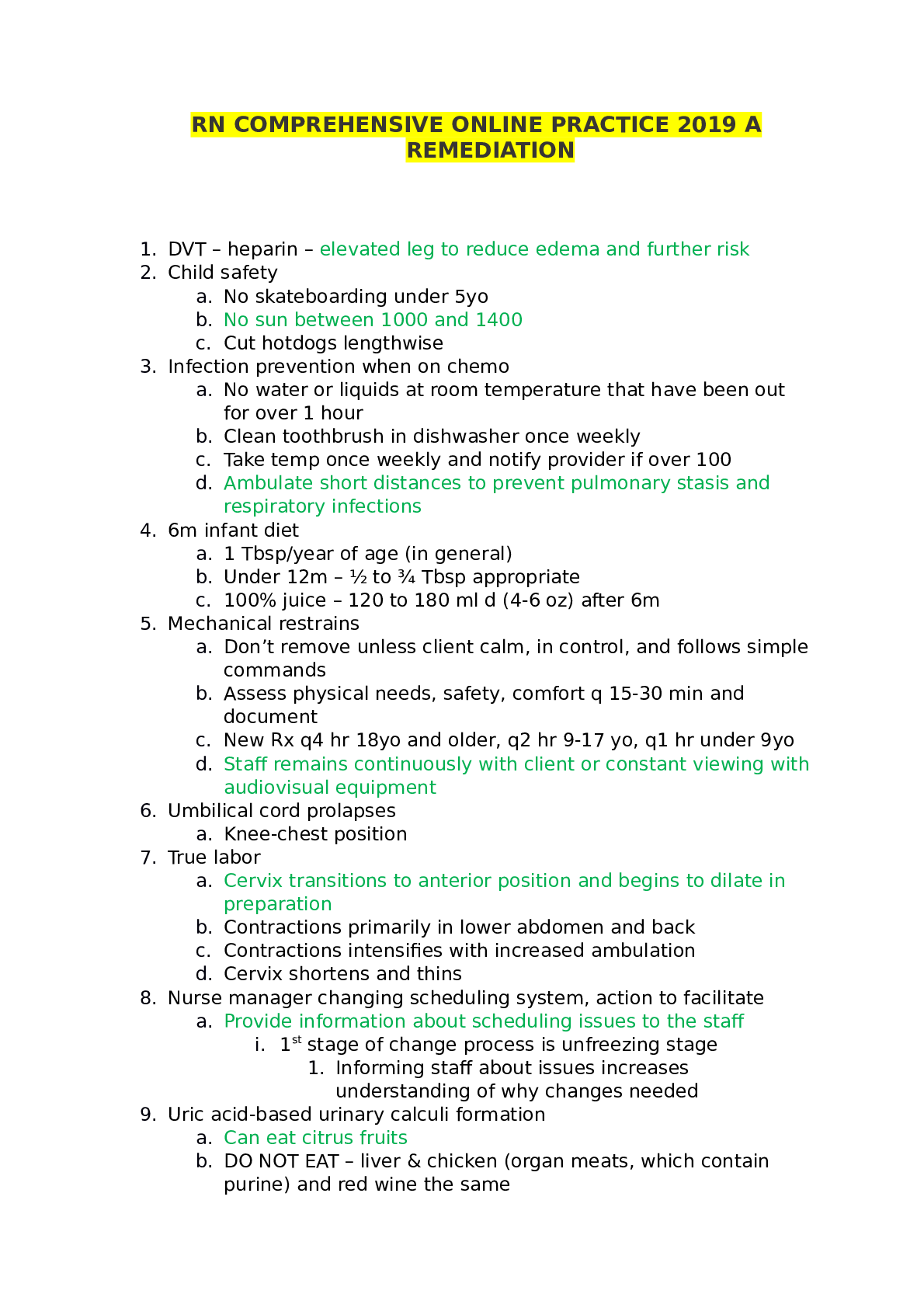

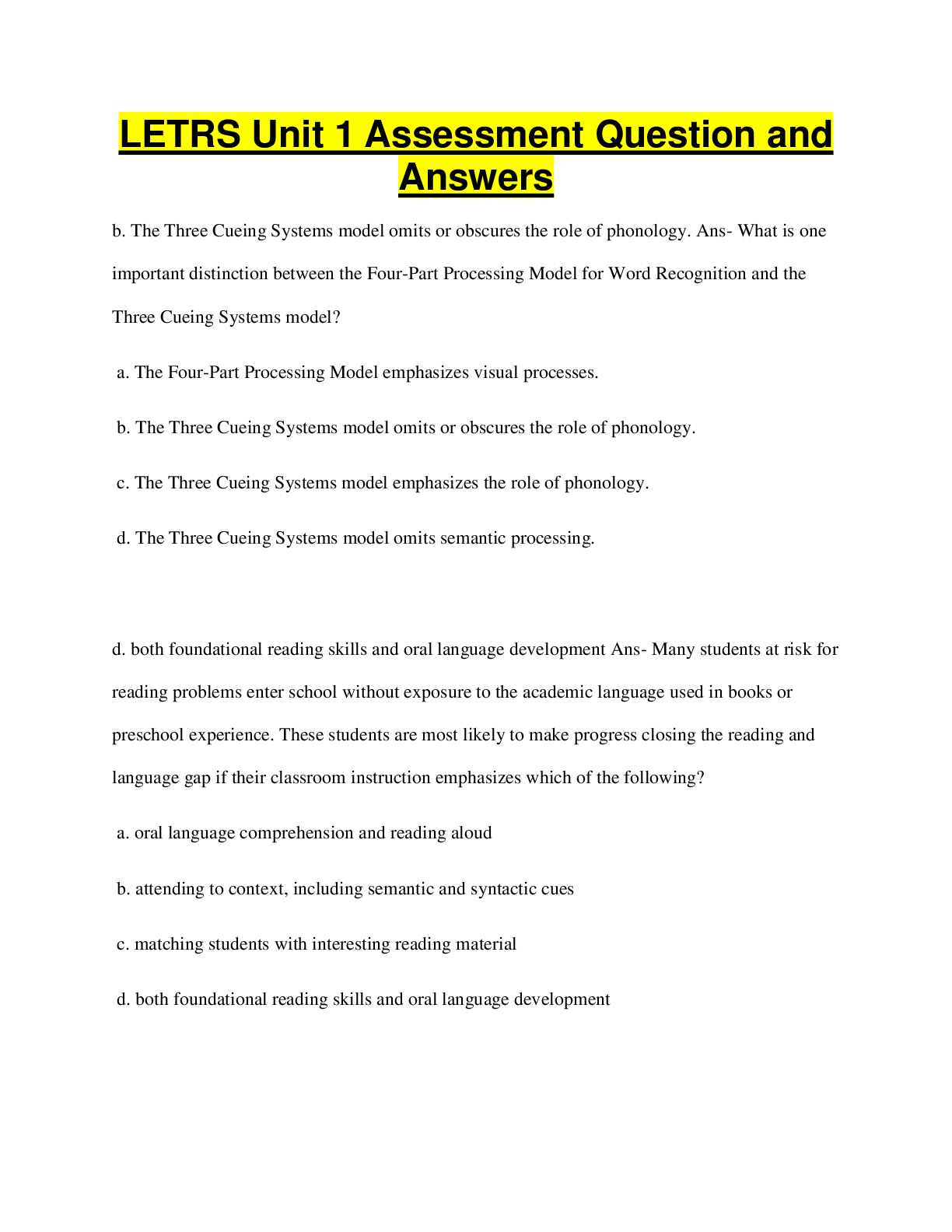
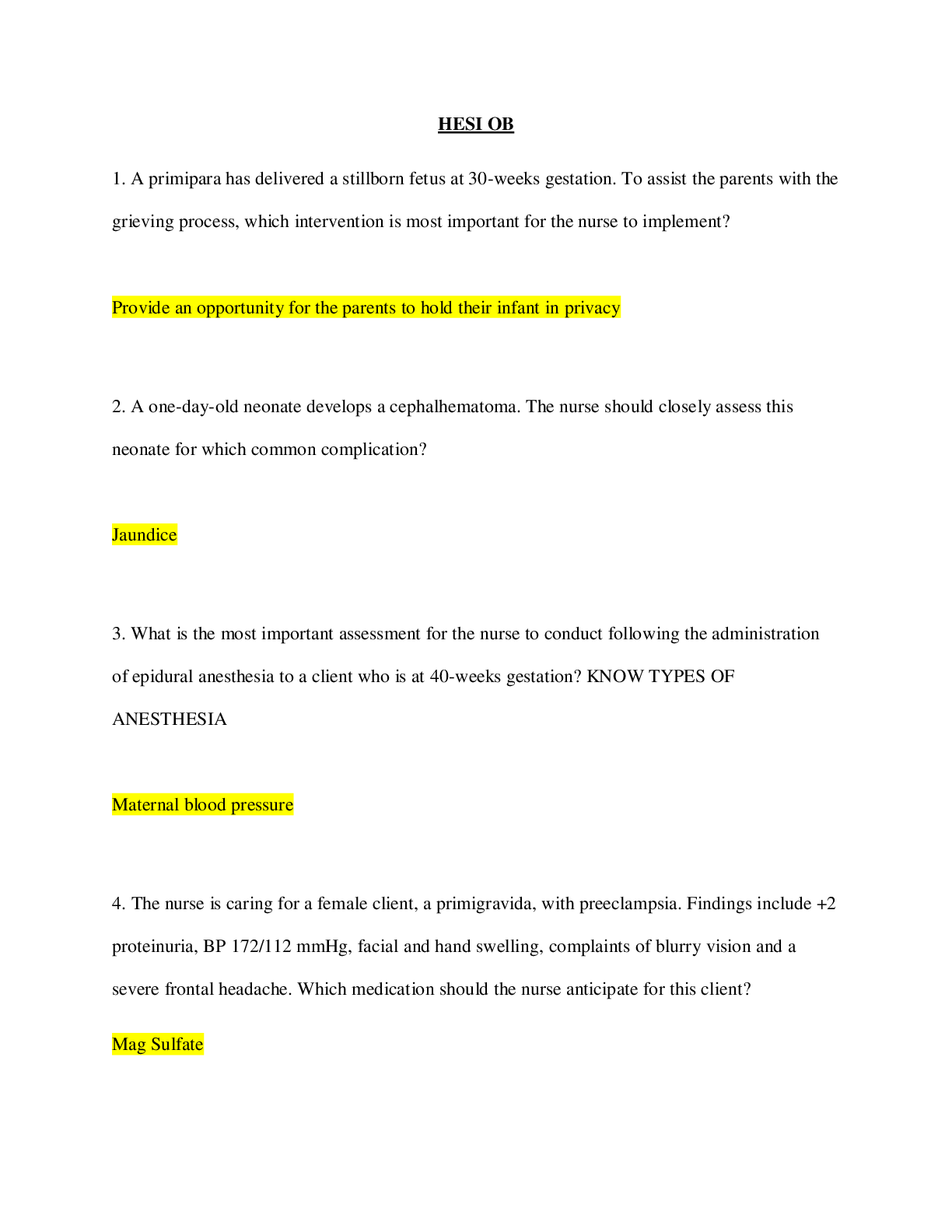
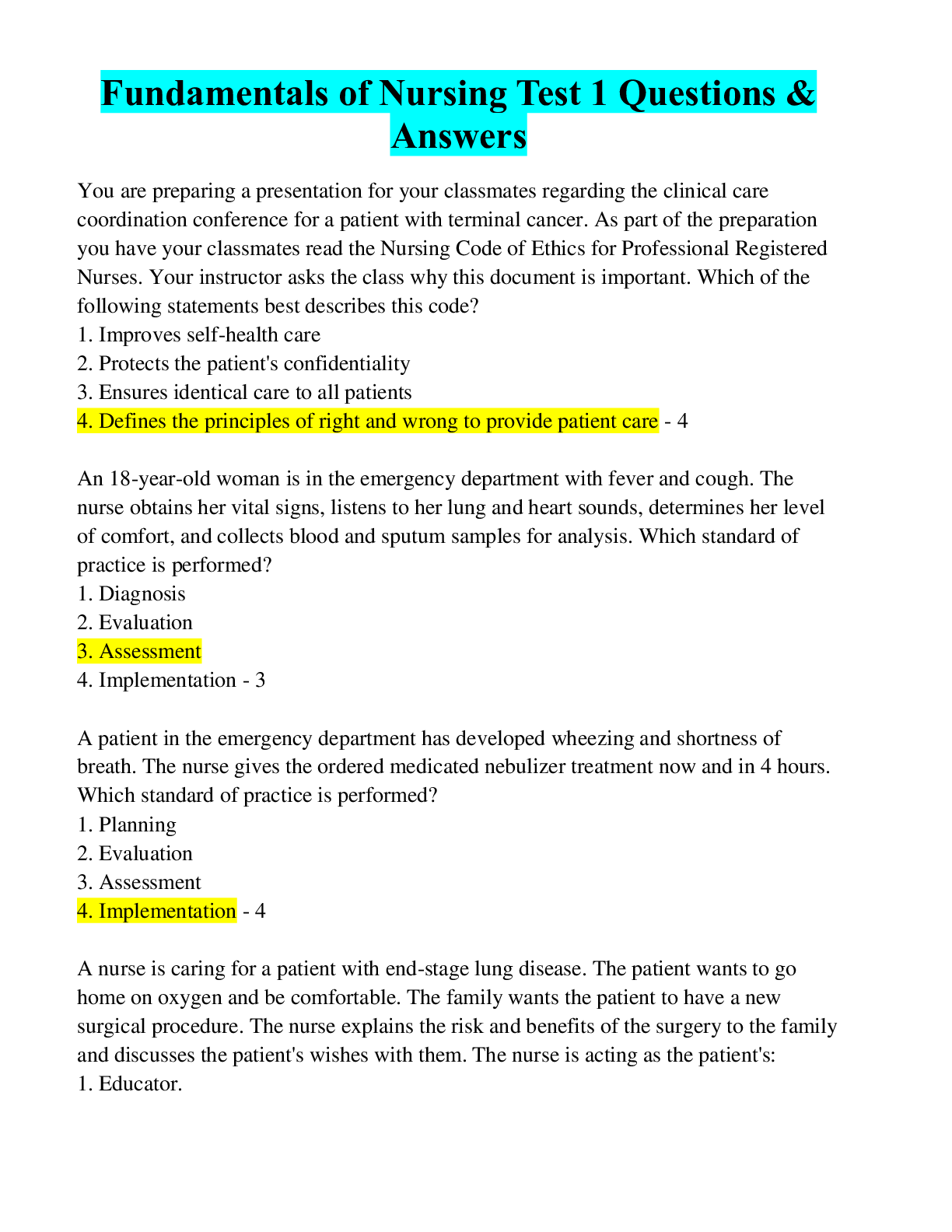
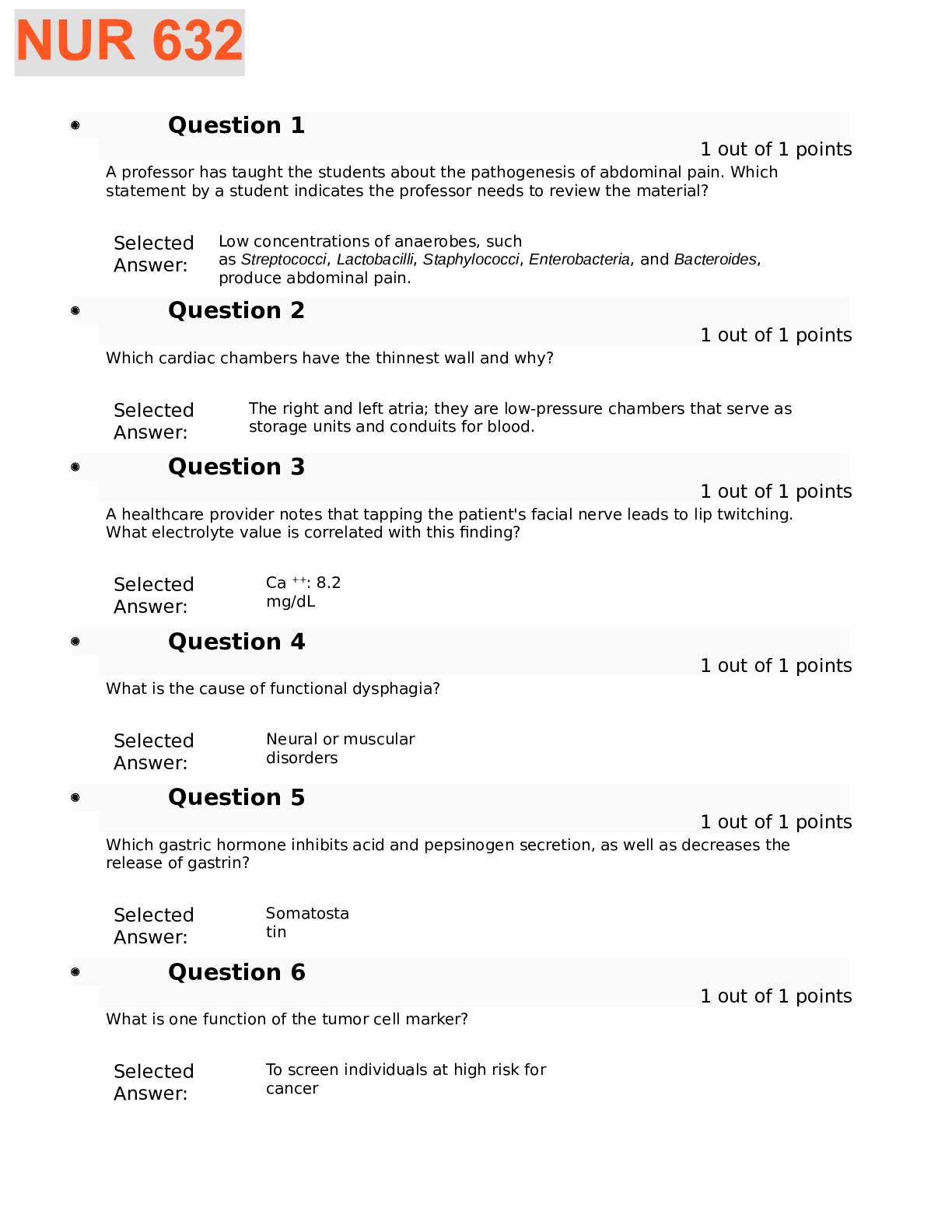
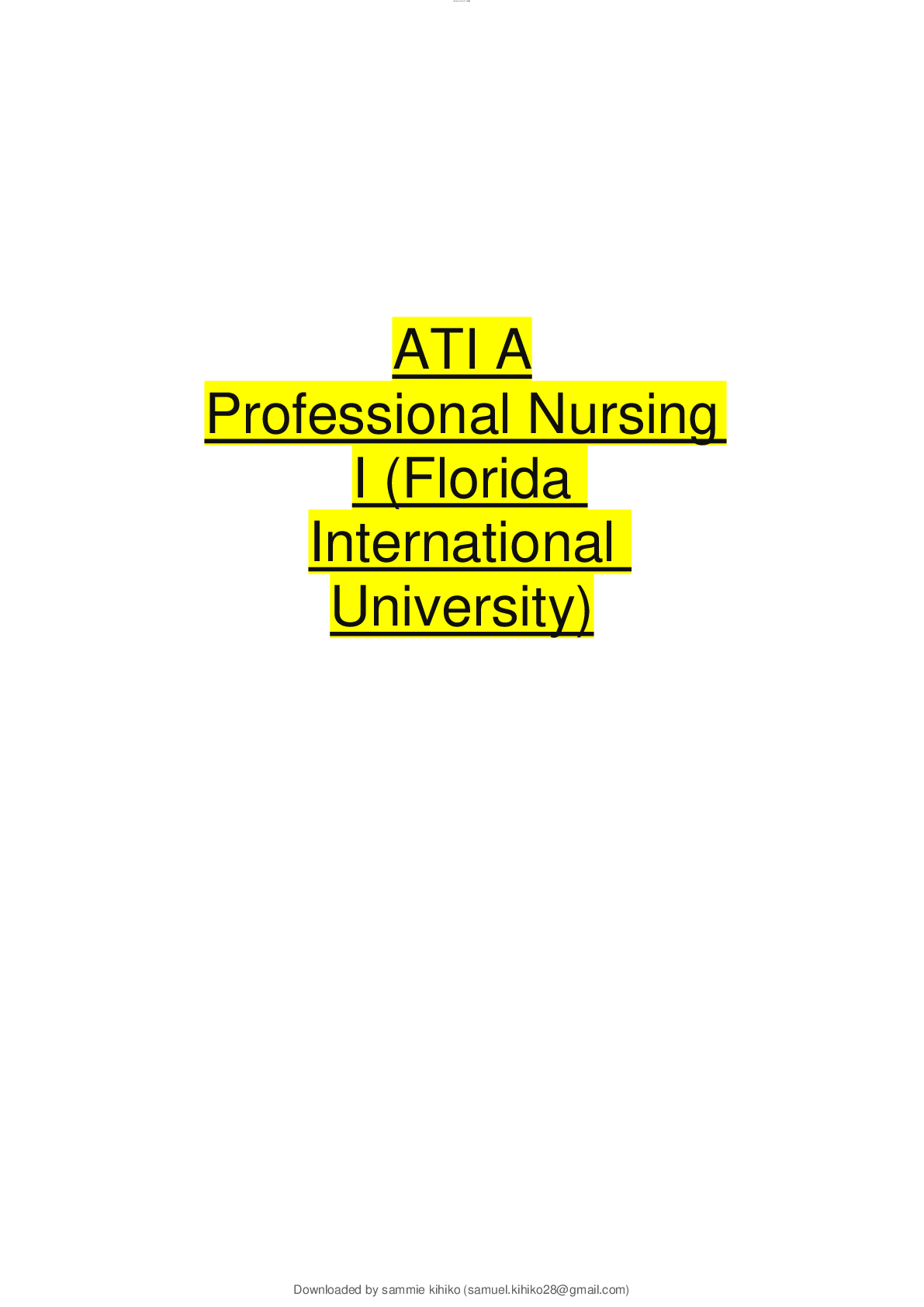

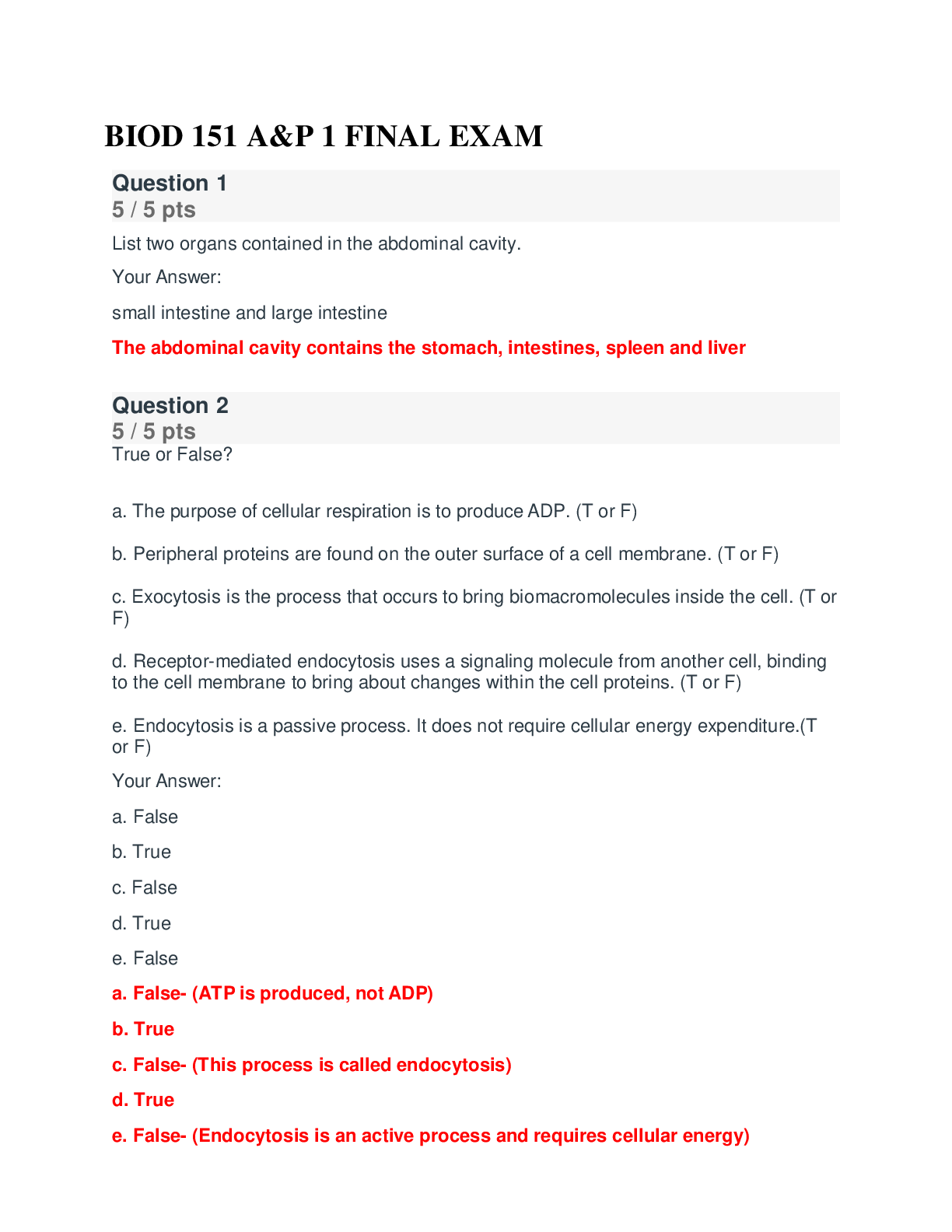

.png)
